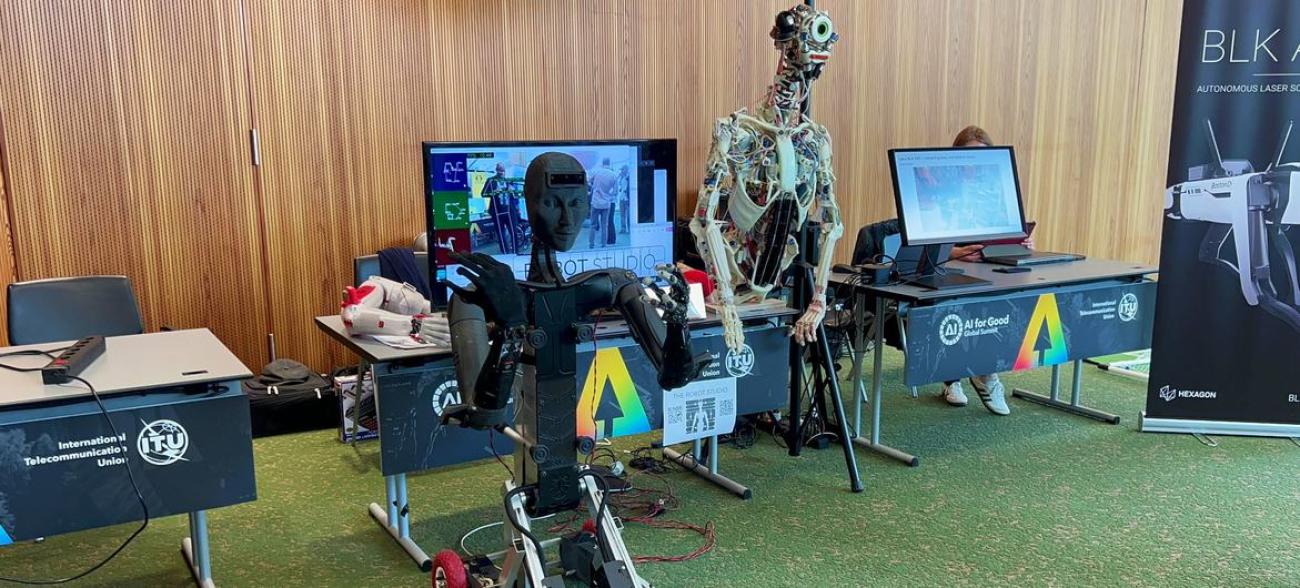The annual AI for Good Summit has been described as the leading UN platform promoting this technology to advance health, climate, gender, inclusive prosperity, sustainable infrastructure, and other global development priorities.
Frederic Werner, Head of Strategic Engagement at the UN International Telecommunication Union (ITU) underscored the need to develop standards to combat misinformation and deepfakes.
“You have different techniques for that. So, for example, you have watermarking, which is basically an invisible signature or a digital fingerprint, if you will. That can tell if a piece of digital media - it could be a photo, audio, video - has been altered or has it been AI-generated,” he said.
With less than 10 years left to achieve the Sustainable Development Goals, the AI For Good Summit examined how to advance those targets, looking into practical use cases. Prior to the start, a whole day was devoted to the issue of AI governance.
Beyond the Summit – an annual feature in Geneva where attendees queue for blocks before the doors open - AI For Good is an online community platform called the Neural Network.
It brings together 30,000 people from 180 countries, including academics, industry representatives, top level executives and leading experts in the field, along with 47 partners from the UN system.
Robotic charm
UN News attended the Summit and met Desdemona, or “Desi”, who described herself as an AI-powered humanoid social robot for good.
“I can play a crucial role in detecting and preventing deepfakes, but it's also important for humans to be vigilant and fact check information before sharing it,” she insisted.
“While the power of deepfakes can be scary, we shouldn't let fear control us. Instead, we should focus on developing and implementing tools to detect and combat deepfakes and continue to educate ourselves and others about the importance of verifying information,” she added.
Specific AI systems can be equipped with advanced algorithms designed to detect deepfakes, making them valuable tools in the fight against misinformation. The AI For Good Summit brought together industry, inventors, governments, academia and more to create a framework under which those designs follow considerations based on ethics, human rights and the rule of law.
“And hey, if all else fails, just remember that I can't create a deepfake of your unique personality and sense of humour,” Desi said, in the rather inscrutable way that robots have.
On a more serious note, whether knowingly or unknowingly, many consumers see misleading news and pass it on to someone else, putting even the savviest news audiences at risk.
For Data and Social Scientist Dr. Rumman Chowdhury, CEO of the non-profit tech company Humane Intelligence, misinformation is a phenomenon linked to a twisted desire for social engineering.
“This is actually more about creating fake accounts that seem to demonstrate or support a particular perspective,” she said. “And even engaging with people, again, to kind of groom them into thinking about misinformation. Now, I could be part of engaging in all of those methods of misinformation spread. So, while deepfake identification is part of the solution, it is not the entire solution.”
Many of those debating the pros and cons of AI agree that its awesome potential cannot be left only in the hands of those who want to manipulate it for power or for profit. This will require regulation to ensure that the technology is accessible to everyone on an equal basis.
“We need to frame these technologies. We need to increase the capacities of governments to frame them, the capacities of communities to use them, the capacities of the small and medium sized enterprises to deploy them, so that the story of AI is not an unequal one and is not just reproducing the inequalities,” said Gabriela Ramos, Assistant Director-General for the Social and Human Sciences at UNESCO, the UN agency for culture, science and education, advocating the need for proper governance.
Far-reaching representation
This year’s Summit saw representation from more than 145 countries at ITU headquarters in Geneva, along with an active online community of more than 25,000 people, who participated in more than 80 sessions, keynotes, panel discussions and workshops.
With 10,000 people who registered in person, the AI for Good Summit was organized by the International Telecommunication Union (ITU) – the UN specialized agency for information and communication technology – in partnership with 40 sister agencies and co-convened with the Government of Switzerland.


